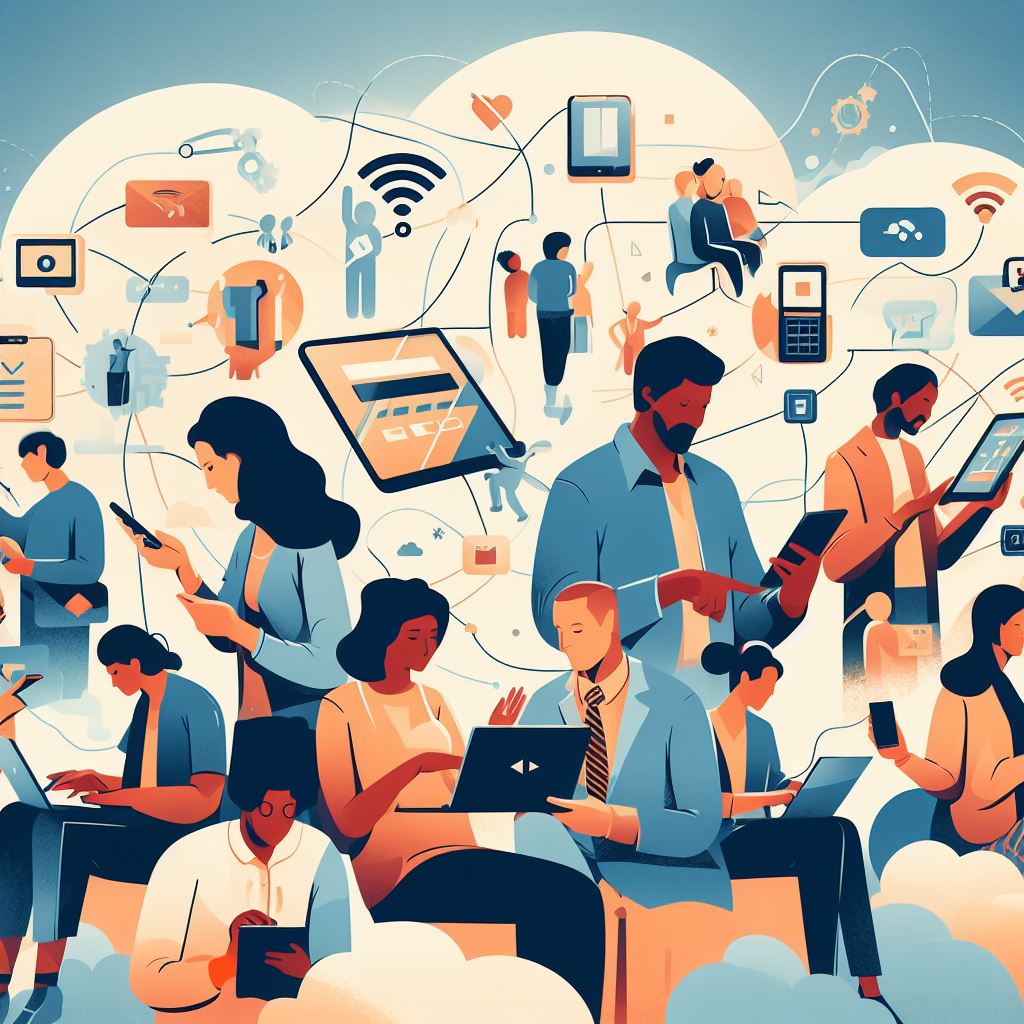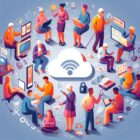What Is Lifeline’s Role in Internet Accessibility?

Imagine a world where everyone has equal access to the internet, regardless of their economic circumstances. This is the mission of Lifeline, a program that plays a vital role in ensuring internet accessibility for low-income individuals and families.
In this article, we will explore Lifeline’s purpose, eligibility criteria, and the services it offers. We will also delve into the impact of Lifeline on internet accessibility and discuss future developments and challenges.
Discover how Lifeline is bridging the digital divide and empowering communities.
Key Takeaways
- Lifeline promotes internet accessibility by providing affordable communication services to eligible low-income individuals.
- Lifeline recognizes the importance of internet access for education, employment, healthcare, and civic engagement.
- Lifeline offers discounted phone and internet services to eligible low-income households.
- Lifeline’s affordability makes internet access more accessible for low-income households, bridging the digital divide and providing equal opportunities and resources.
Lifeline’s Mission and Purpose
Lifeline’s mission and purpose revolve around promoting internet accessibility through providing affordable communication services to eligible low-income individuals. The Lifeline program, established in 1985, aims to bridge the digital divide by offering discounted phone and internet services to those who meet the income requirements. This initiative recognizes that the internet has become an essential tool for education, employment, healthcare, and civic engagement. By making these services more affordable, Lifeline seeks to ensure that all individuals, regardless of their financial situation, have access to the opportunities and resources that the internet provides.
To achieve its mission, Lifeline partners with various telecommunications companies who offer discounted service plans to eligible individuals. These plans typically include a fixed monthly allotment of data and voice minutes, ensuring that users can stay connected and communicate effectively. Lifeline also supports the provision of broadband internet services, as it recognizes the increasing importance of high-speed internet access for tasks such as remote work, online learning, and telehealth services.
In addition to providing affordable communication services, Lifeline also focuses on promoting digital literacy and empowering individuals to make the most of their internet access. The program collaborates with community organizations and educational institutions to offer training programs that teach essential digital skills, such as online safety, internet navigation, and basic computer literacy. By equipping individuals with the knowledge and skills they need to navigate the digital world, Lifeline helps to bridge the digital divide and promote digital inclusion.
Eligibility Criteria and Application Process
To determine if you qualify for Lifeline’s affordable communication services, you must meet specific eligibility criteria and complete the application process. Here are the steps you need to follow:
- Check your income level: Lifeline is available to individuals with a household income at or below 135% of the Federal Poverty Guidelines or who participate in certain federal assistance programs such as Medicaid, SNAP, or Supplemental Security Income (SSI).
- Gather the necessary documentation: You’ll need to provide proof of your income or participation in qualifying programs. This may include recent pay stubs, tax returns, or documentation from government agencies.
- Select a Lifeline service provider: Lifeline is offered by various providers, so you’ll need to choose one that operates in your state or territory. You can find a list of providers on the Universal Service Administrative Company (USAC) website.
- Submit your application: Once you have gathered the required documents and selected a provider, you can submit your application. This can typically be done online, by mail, or in person at a participating provider’s office.
Services and Benefits Offered by Lifeline
You can access a range of services and benefits through Lifeline.
Lifeline offers discounted phone and internet services to eligible low-income households. One of the main benefits is the Lifeline Program, which provides a monthly discount on either phone service, internet service, or bundled phone and internet services. This discount helps to make these essential communication services more affordable for those who qualify.
Additionally, Lifeline offers the Tribal Link Up program, which provides a one-time discount on the installation of phone service for eligible residents on tribal lands. Lifeline also offers a discount on the activation of broadband internet service through the Tribal Lifeline program. This program aims to bridge the digital divide in tribal communities by making internet access more accessible and affordable.
Another service offered by Lifeline is the Emergency Broadband Benefit, which provides a temporary discount on monthly phone or internet bills for eligible households during the COVID-19 pandemic.
Lifeline also provides support and resources through its Lifeline Support Center, where individuals can find information about their eligibility, application process, and available services.
Impact of Lifeline on Internet Accessibility
The impact of Lifeline on internet accessibility is significant for eligible low-income households. Here are four reasons why Lifeline has made a difference in connecting these households to the internet:
- Affordability: Lifeline provides a monthly discount on internet service to eligible low-income consumers. This discount makes internet access more affordable, allowing households to allocate their limited resources to other essential needs.
- Bridging the Digital Divide: The internet has become an essential tool for education, job searching, healthcare, and communication. Lifeline helps bridge the digital divide by ensuring that low-income households have access to the same opportunities and resources that those with higher incomes enjoy.
- Educational Advancement: With Lifeline’s assistance, eligible low-income households can access online educational resources, such as online courses and research materials. This enables students to improve their knowledge and skills, furthering their educational advancement.
- Economic Empowerment: Internet access opens up a world of economic opportunities. With Lifeline’s support, low-income households can search for job opportunities online, submit job applications, and access online training programs. This empowers individuals to enhance their employability and improve their financial situation.
Future Developments and Challenges for Lifeline
As we look ahead to the future developments and challenges for Lifeline, it’s important to consider the continued impact of the program on internet accessibility for eligible low-income households. Lifeline has made significant progress in bridging the digital divide by providing subsidized phone and internet services to those who can’t afford them.
However, there are several key areas that require attention in order to further enhance internet accessibility.
One future development for Lifeline is the expansion of its eligibility criteria. Currently, Lifeline primarily focuses on providing services to low-income individuals. However, there’s a growing need to include other vulnerable populations, such as seniors and individuals with disabilities. By broadening the eligibility criteria, Lifeline can ensure that these groups have equal access to the internet and the opportunities it provides.
Another challenge for Lifeline is the need to continuously adapt to rapidly evolving technology. As technology advances, internet accessibility must keep pace. Lifeline must stay informed about emerging trends, such as the shift towards mobile internet usage, and adjust its services accordingly. This may involve providing subsidies for smartphones or other mobile devices, as well as supporting initiatives that improve network coverage in rural areas.
Additionally, Lifeline must address the issue of affordability. While the program provides subsidies for phone and internet services, the overall cost of internet access remains a barrier for many low-income households. Lifeline should explore partnerships with internet service providers to negotiate more affordable plans for eligible households. This could involve offering discounted rates or creating special packages tailored to the needs and financial constraints of low-income individuals.
Frequently Asked Questions
What Is the History of Lifeline and How Did It Come Into Existence?
Lifeline’s history and existence lie in its mission to provide affordable communication services to low-income households. It has evolved to include internet accessibility, bridging the digital divide and promoting equal opportunities.
Are There Any Restrictions or Limitations on the Types of Internet Services That Lifeline Supports?
Lifeline supports a variety of internet services, but there are some restrictions and limitations. These include data caps, speed limits, and certain types of content that may be restricted.
How Does Lifeline Determine the Amount of Financial Assistance Provided to Eligible Individuals?
Lifeline determines financial assistance based on your eligibility and the cost of the internet service provider you choose. They take into account factors like the type of service, speed, and data usage to determine the amount of support you receive.
Can Lifeline Recipients Switch Their Internet Service Providers or Are They Limited to a Specific Provider?
You have the freedom to choose from different internet service providers as a Lifeline recipient. You are not limited to a specific provider, allowing you to find the best option that suits your needs.
What Measures Does Lifeline Take to Ensure the Privacy and Security of the Personal Information of Program Participants?
Lifeline takes measures to ensure your personal information’s privacy and security. They implement protocols and safeguards to protect your data from unauthorized access or disclosure, ensuring your peace of mind while participating in the program.



